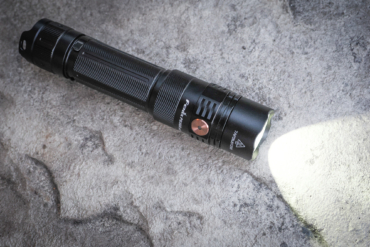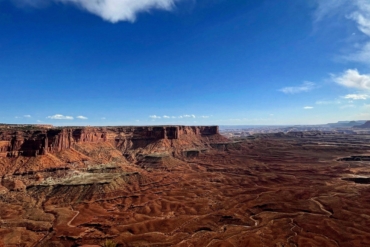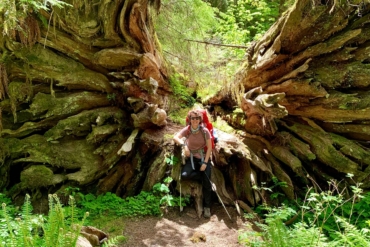If a wildfire were to ignite while you were hiking, would you know what to do? Learn what to do in a wildfire when you’re off the beaten track.

The American West is a tinderbox right now with more than 80 fires burning across the region. Consider the Eagle Creek fire where a rogue firework sparked a blaze trapping 143 hikers in Oregon’s otherworldly Punchbowl Falls. It took an all-night hike and park ranger coordination from ground and air to bring all of the people out safely.
If you live out west, either you are in a fire, or smelling the effects of a fire. Either way, we thought it would be a good time to reflect on some tips to deal with wildfire.
Where It’s Found. By definition, wildland fires are fires on non-human made regions. Wildfires can be caused by lightning, or more commonly, by people.
How To Identify. Smoke will be your primary indicator, though a wildfire haze can travel hundreds of miles from its source. A red glow at night can indicate a blaze burning on the other side of a hill. The sound of crackling or seeing sparks? That indicates imminent danger.
How To Avoid Wildfire
To communicate the threat of fire, fire managers use a five-scale system called the National Fire Danger Rating System. The NFDRS compiles data like topography, weather, and fuel source to determine regional fire threat.
- Low (green): Fire starts are unlikely. Weather and fuel conditions will lead to slow spread of fire
- Moderate (blue): Some fires might be expected, with moderate length and rate of spread
- High (yellow): Wildfires are likely in regions with continuous fuel and can be difficult to control in windy conditions
- Very high (orange): Fires start easily and can easily burn out of control
- Extreme (red): Fires will start and spread rapidly and has the potential to become large with erratic behavior
Before you go into the backcountry, check with the Wildland Fire Assessment System for your regional fire threat level.
General Camp Tips
It’s estimated that people cause 84% of all wildfires, resulting in 44% of the areas burned. Good news is that these fires are entirely preventable. Here are some tips on how you can prevent wildfires.
- Campfires. Campfires are the leading cause of wildfires. Pay attention to burn bans and only use established fire pits. Give your fire pit a 10-foot tinder free diameter ring. Have a shovel and water nearby to extinguish a rogue fire and never leave a campfire unattended.
- Put fires dead out. Stir the coals with water until the pit is cold to touch.
- Don’t use fireworks in the backcountry. It’s illegal and even sparklers can emit hot sparks capable of igniting dry tinder.
- Automobiles. Be aware of any dragging chains. Metal chains can spark, igniting a grass fire. Use spark arresters if off-roading and don’t park your car over a dry patch of grass.
- Firearms. While not as common as campfires, target shooting is also to blame for many wildfire ignitions. Consider postponing your shooting session in risky fire danger conditions.
- Follow local ordinances. Many camps—particularly out west—have trailhead signs that ban open fires and grills during the dry season. Call your land management resource for the most up-to-date limitations.
- Have an evacuation plan. Familiarize yourself with the trail system you are visiting and know where the closest bodies of water, sandy…or low vegetation regions are.
What To Do If Encountered
Coming face-to-face with a wildfire is probably the scariest scenario one will encounter. Fires can consume massive amounts of land very quickly.
Faced with a fire?
- Don’t try to outrun a fire. Fires can rush upwards of 14 mph in grassland—faster with a stiff wind.
- Move upwind of the fire and avoid high ground. Hot air rises and fires climb. Avoid high ground.
Stuck in a fire?
- Look for non-flammable terrain, like water or a sparsely vegetated areas.
- Find a depression, hunker down. Hot air rises and a depression could allow the fire to burn over you.
- Get to a burned area. Though it may still have small fires and be considerably smokey, a burned area is unlikely to reignite.
- Protect your airways. Smoke contains many dangerous particulates with effects ranging from short term pulmonary issues and premature death. Avoid breathing smoke. To avoid smoke, breathe through a wet bandana and stay low to the ground.
- Remove synthetic clothing. When ignited, synthetic material can shrink-wrap around the body. Natural fibers are typically flame resistant.
Worst Case Scenario
Death. Smoke from the fire can cause long term respiratory issues and potentially suffocation. Of course, fires can suffocate and burn.







